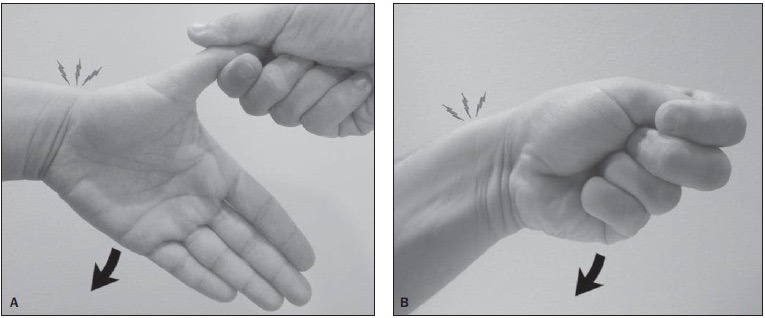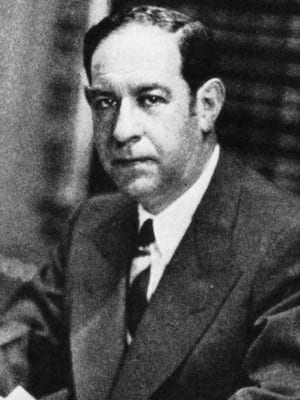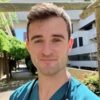Harry Finkelstein
Harry Finkelstein (1883 – 1975) was an American Surgeon.
Eponymously associated with the Finkelstein Test to confirm the diagnosis of De Quervain tenosynovitis
One of the co-founders of the Hospital for Joint Diseases in New York
In 1932, Along with E. J. Haboush invented a stabilizing apparatus and operative technique for bone lengthening, anticipating by decades the current widely utilized Ilizarov technique
Most commonly quoted as having died in 1939. In fact, this was the year of his retirement following a severe coronary occlusion. Harry Finkelstein lived on until 1975 and died at the age of 91.
Biography
- Born 1883 New York City, USA.
- 1904 – Medical degree Columbia University College of Physicians and Surgeons
- 1906 – Member of the original founding staff of the Hospital for Joint Diseases
- 1924 – Chief of the Orthopedic Service, Hospital for Joint Diseases
- 1925 – Consulting Orthopedic Surgeon, Jewish Memorial Hospital
- 1927 – Chief of orthopedic surgery at Trinity Hospital, Brooklyn
- 1939 – Retired from medical service due to medical illness
- Fellow of the American College of Surgeons
- Fellow of the American Academy of Orthopedic Surgery
- Died 24 January 1975 Tarrytown, N.Y.
Medical Eponyms
Finkelstein Test (1930)
A test for diagnosing de Quervain tenosynovitis, or snapping thumb syndrome.
1930 – Review of surgical operation, histology and clinical examination led Finkelstein to summise
On grasping the patient’s thumb and quickly abducting the hand ulnarward, the pain over the styloid tip is excruciating. This is probably the most pathognomonic objective sign.
Finkelstein H. JBJS 1930: 522
*1927 – An alternative test suggested by E. Eichhoff was accurately transposed from the German and quoted in Finkelstein’s 1930 paper in full. This led to confusion regarding the anatomics of the testing procedure aggravated by a poor description of the test by Leão (1958); and further augmented by later authors.

A: Finkelstein Test; holding thumb whilst hand forced into ulna deviation
B: Eichhoff test; grasping thumb in palm of hand whilst wrist is ulna deviated
Major Publications
- Finkelstein H. Stenosing tendovaginitis at the radial styloid process. JBJS 1930, 12: 509-540. [Finkelstein Test]
- Rosenheck C, Finkelstein H. Treatment of sciatica by perineural infiltrations and epidural injections – an analysis of fifty cases. JAMA. 1916;LXVII(27):2001.
- Haboush EJ, Finkelstein H. Leg lengthening with new stabilizing apparatus. J Bone Joint Surg 1932:14:807
- Finkelstein H. Osteochondritis of the spine. The American Journal of Surgery, 1927; 3(1): 80
- Rosenheck C, Finkelstein H. Sciatica a neuro-orthopedic consideration. JAMA. 1925; 84(13): 939-944
References
Biography
- In memoriam: Dr. Harry Finkelstein. Bull Hosp Joint Dis. 1975 Apr;36(1):1.
- Dr. Harry Finkelstein, 91, Orthopedic Surgeon, Dies. New York Times. Jan 25, 1975
Eponymous terms
- Eichhoff, E. Zur Pathogenese der Tendovaginitis stenosans. Bruns’ Beiträge zur klinischen Chirurgie 1927; 139: 746-755
- Leao L. De Quervain’s disease; a clinical and anatomical study. J Bone Joint Surg Am. 1958 Oct;40-A(5):1063-70.
- Aitken AP. Stenosing Tendovaginitis at the Radial Styloid Process (de Quervain’s Disease). N Engl J Med 1945; 232:105-107
- Elliott BG. Finkelstein’s test: A descriptive error that can produce a false positive. J Hand Surg Br. 1992;17(4):481-2
- Waseem M, Khan M, Hussain N, Giannoudis PV, Fischer J, Smith RM. Eponyms: errors in clinical practice and scientific writing. Acta Orthop Belg. 2005;71(1):1-8
Dr Ronan McKenna, MB BCh BAO at National University of Ireland Galway. Living in Australia with plans for a future in Emergency Medicine. A keen interest in Medical History, Wilderness Medicine and Sport.



Dr. Finkelstein was my great grandfather. Thank you for this detailed account of his career, giving me the opportunity to learn about him.